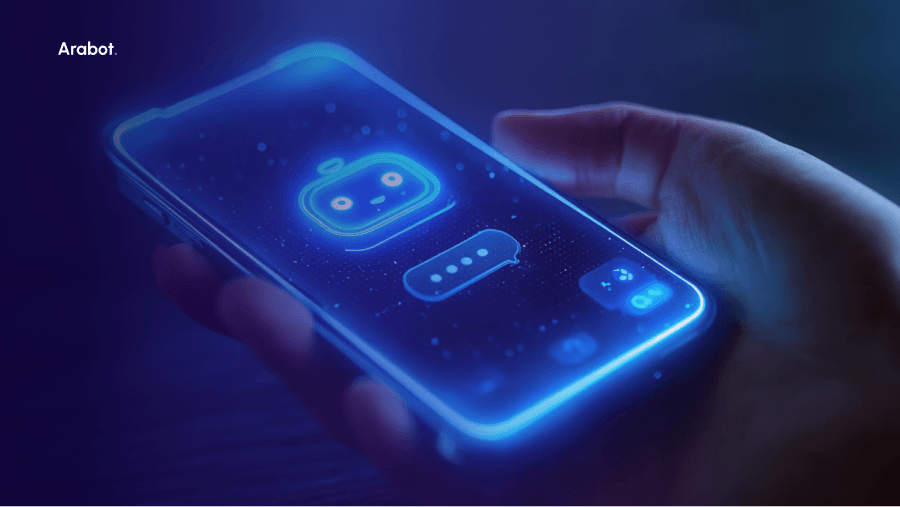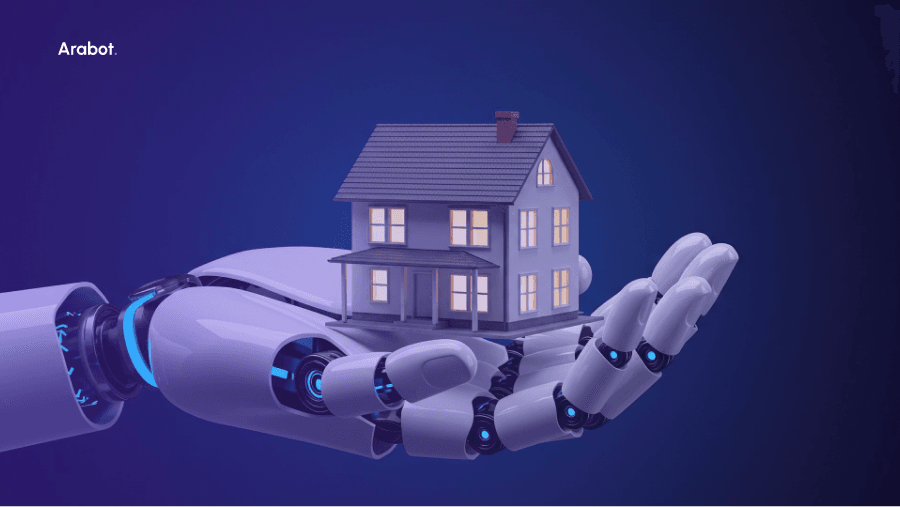- 1.
Define Your Objectives
- 2.
Understand the Technology
- 3.
Evaluate Integration Capabilities
- 4.
Assess Customization and Personalization Options
- 5.
Consider Scalability and Growth Potential
- 6.
Review Analytics and Reporting Features
- 7.
User Experience and Testing
- 8.
Making Your Decision
- 9.
Potential Challenges
- 10.
Future of Conversational AI
- 11.
Conclusion
Tech
Choosing the Right Conversational AI for Your Business

Conversational AI refers to technologies that utilize natural language processing (NLP) and machine learning to understand, interpret and respond to human language in an automated yet natural conversational manner. Chatbots are a common type of conversational AI system that mimics human conversations through messaging interfaces. NLP and machine learning enable chatbots to comprehend language inputs, derive meaning from text, and respond intelligently.
The concept of conversational agents emerged in the 1960s, with early programs like ELIZA. Advancements in computing power, AI and language processing capabilities have allowed for more advanced modern chatbots. Initially relying on rules and scripts, chatbots can now learn from data using machine learning models. This has transformed how they interact and assist users.
Businesses are recognizing chatbots' potential to enhance customer experiences through personalized, 24/7 self-service support across sales, marketing, and other functions. Chatbots streamline common inquires, providing immediate assistance and freeing up human agents for more complex tasks. As conversational interfaces improve, they will continue revolutionizing how companies engage digitally with consumers.
This guide outlines key factors to consider when selecting a conversational AI platform. Following the guidelines will help businesses identify optimal solutions aligned with their unique objectives and requirements through exploring technologies, capabilities, costs and more. The right chatbot selection facilitates seamless adoption and maximizes the benefits of conversational commerce.
Define Your Objectives
Defining objectives upfront is crucial for chatbot selection. Common goals businesses aim to achieve include improving customer support, driving sales and leads, enhancing marketing efforts, and streamlining post-purchase services. Objectives should be specific, for example "reduce support inquiries by 20% within 6 months" versus general terms like "customer service."
Objectives will determine necessary features and success metrics. Consider support through FAQ handling to shorten wait times, sales bot capabilities like qualifying leads, or using chatbots for internal employee queries. Tailored objectives help compare platforms effectively. They also facilitate measuring a solution's impact through monitoring Key Performance Indicators (KPIs) like response speed, lead conversion rates, or customer satisfaction scores. Well-articulated goals aid the entire procurement and implementation process.
Understand the Technology
There are two predominant chatbot architectures - rule-based and AI-driven models. Rule-based bots rely on explicit programming of dialog structures and response triggers. They are best suited for simple, predictable conversations. However, maintaining them becomes challenging as requirements expand.
AI-driven chatbots use machine learning to autonomously improve through analyzing massive customer interaction datasets. Advanced natural language processing powers their abilities to comprehend language nuances, contextual clues, cultural differences, and derive implied meaning. Modern bots can understand intent behind questions, maintain conversations over multiple turns, and learn independently without reprogramming.
Natural language processing (NLP) is key technology behind chatbot comprehensions skills. NLP analyzes language semantics, syntax, entities, and more to derive intent. Technologies like natural language understanding (NLU) and natural language generation (NLG) enable interpretation and formulation of responses. Machine translation facilitates multi-lingual bots.
The complexity of use cases determines the best chatbot approach. While rule-based bots work for basic FAQs, AI is preferable when dynamic understanding is needed, such as handling open-domain questions across multiple products/services. Advanced machine learning continually augments chatbot aptitudes over time.
Evaluate Integration Capabilities
Integration underpins seamless digital experiences customers expect. Considering a platform's connectivity is important, especially for functions like customer service involving backend systems. Compatibility with major business applications is crucial, for instance CRM platforms containing customer profiles. Integration enables bots to personalize interactions based on user histories.
Other common must-have integrations involve help desk software, websites/mobile apps, and e-commerce sites. Connectivity allows bots to field support tickets, retrieve product catalogs, track orders, and complete transactions directly. Bots should also integrate popular messaging platforms people use including WhatsApp, Messenger, Telegram etc. Cross-channel availability expans bot reach and boosts adoption rates. Evaluate integrations supported along with ease of set-up processes for relevant systems.
Assess Customization and Personalization Options
Tailoring chatbots to individual business needs, branding and consumers strengthens relationships. Consider customizing interfaces with logo/color schemes reflective of a company’s style guide. Personalization options adapt interactions to diversity of audience attributes like language, demographics, purchase histories etc. Platforms should facilitate:
- Customizing conversations - Flexibly script bot dialogue to satisfy specific use cases beyond standard templates.
- Personalized responses - Adjusting tone, formality and responses on a per user basis requires ML/NLP custom models or tagged templates.
- Triggers for 1:1 engagements - Bots can recognize sentiment/frustration and route users to sales/support when needed.
- Data collection - Over time, bots capture anonymized user details to develop richer customer profiles enabling better tailoring. Look for platforms supporting such data enrichment.
- Content management - Tools to centrally publish, group and manage conversational assets help non-technical teams.
Consider Scalability and Growth Potential
As demand rises for digital/self-service options, select a bot platform able to sustain traffic bursts and future feature needs. Scalability reflects a solution's ability to maintain performance under dynamically changing workloads. Key factors to evaluate include:
- Infrastructure elasticity - Can compute resources increase/decrease automatically based on usage via cloud hosting? This avoids bottlenecks.
- High availability - What redundancy and failover mechanisms ensure constant up-time as users grow? Look for 99.9%+ uptime commitments.
- Model management - Does the platform facilitate distributing ML workloads or retraining global models to support evolving use cases?
- Traffic projections - Account for natural spikes like sales periods. Quality should hold with 10x/100x traffic surges.
- Automation - As bots handle more queries over time, they automate processes freeing agents for strategic duties. ML continually improves bot aptitudes.
Advanced scalability allows focusing on consumers versus infrastructure, empowering expansions and launching new services with chatbots. It underpins a platform's longevity supporting a business for years.
Review Analytics and Reporting Features
Actionable analytics are critical for optimizing chatbot deployments and proving value to stakeholders. Consider platforms offering:
- Usage metrics - Volume of queries answered, users engaged, and response/resolution times indicating bottlenecks.
- Sentiment analysis - Gauge emotion and satisfaction from interactions to improve. Look for integrations with sentiment APIs.
- Conversion funnel visibility - Understand which stages queries drop-off to refine onboarding/sales bots.
- Individual query transcripts - Review examples of conversations to find opportunities. Privacy controls are important.
- Customizable dashboards - Visualize chosen KPIs geared towards objectives for quick executive summaries.
Leverage analytics to A/B test content, surface unused features for promotion, and monitor objectives constantly. Combined with user feedback, it guides strategic continuous improvements ensuring bots meet evolving needs.
Comprehensive security features provide assurances for sensitive use cases in healthcare, finance which demand high compliance. They instill trust for customers and legal protection as adoption increases responsibly.
User Experience and Testing
Prioritize easy administration and satisfaction for both customer and employee personas interacting directly or managing bots respectively. Key areas to assess include:
- Content authoring - What tools does the vendor provide non-developers to create, organize, publish and version conversational assets at scale?
- Workflow integrations - Can bot interactions trigger relevant actions like ticket creation seamlessly for agents?
- Administration dashboards - Consider intuitiveness of dashboards for monitoring performance, editing responses and reviewing user issues.
- Testing capabilities - Best practices involve multichannel testing, error detection and ability to simulate traffic for pre-launch bug detection.
Focus on platforms easing maintenance and refinement with user-friendly tools empowering stakeholders across roles.
Making Your Decision
Narrowing finalists involves comprehensive evaluation across these factors:
- Shortlist 2-3 options meeting core objectives and technical must-haves.
- Request demos highlighting differentiated features for target uses cases.
- Consult implementation partners for third party reviews of the vendor's reputation and capabilities.
- Test platforms internally with sample data/queries to assess ease of customization.
- Reference check other customers of shortlisted vendors.
- Consider pricing models fitting budget while delivering good long-term value.
- Assess scalability to sustained growth projections both in agent volumes assisted and processes automated over time.
- Evaluate security certifications and privacy controls for compliance needs.
- Gauge support quality and resources for smooth deployment handled by their experts.
Selecting the optimal conversational AI partner demands rigor to maximize ROI and long-term strategic advantages. The right fit aligns capabilities with a clear vision delivering goals through iterative improvements.
Implementation Best Practices
Careful planning eases chatbot adoption within complex business ecosystems. Recommended steps:
- Plan timelines/resources - Dedicate team for integration, content creation, rollout across 3-6 months typically.
- Appoint key stakeholders - Identify champion, subject matter experts, decision-makers like CIO early for project buy-in.
- Tailor conversations - Collaborate with SMEs to write natural conversations addressing objectives.
- Integrate core systems - Prioritize critical integrations to CRM, helpdesk etc. for Day 1 success.
- Assign bot responsibilities - Define clear roles and ownership in ticketing/order workflows etc.
- Train customer facing staff - Ensure success by preparing agents managing queries alongside bots.
- Onboard bot users - Communicate bot uses via knowledge base articles or demos for user preparedness.
- Manage user expectations - Establish realistic expectations that bots currently have limitations.
- Track KPIs constantly - Fine tune using analytics dashboards continually over lifecycle.
- Refine over time - Progressive rollout establishes trust while perfection occurs iteratively long-run.
Gradual rollouts with dedicated teams propel bots as invaluable workforce augmentation tool versus disruptive technology to organizations.
Potential Challenges
While chatbots promise benefits, certain hurdles could arise requiring mitigations:
- Complex inquiries - Bots may struggle beyond common questions requiring human assistance. Augment with agents as needed.
- Privacy issues - Define clear policies governing data collection, usage adhering to regulations to avoid legal risks.
- Technical limitations - Be aware of current bot comprehension constraints requiring fallbacks when ambiguity occurs. Hybrids may provide superior experiences now.
- Biases in training data - Use balanced, anonymized datasets without biases when possible that could offend certain users inadvertently. Monitor for issues and refine.
- Integration complexities - Prioritize must-have systems upfront acknowledging full integration maturity may occur over time in large enterprises.
- User adoption hurdles - Communicate bot pilot methodically to optimize user comfort, expectations through demos and feedback loops. Win early advocates.
- Budget overruns - Clearly establish control points, change request processes to manage scope creep retaining affordability.
Proactively addressing such challenges cultivates transparency building trust as conversational capabilities continuously expand for richer assisted experiences ahead. With care, risks are manageable.
Future of Conversational AI
As an evolving field, major enhancements are expected:
- Personalization at scale - Deeper persona profiling and contextual personalization using ubiquitous connected data becomes faster, more robust expanding self-service boundaries.
- Multimodal capabilities - Bots leverage vision, speech, AR/VR to understand customers more holistically through different channels for rich interactions.
- Generative language models - Advanced capabilities like GPT-3 usher in an era of dialogue systems generating entirely novel, engaging responses at human-level scales.
- Integrations everywhere - Embedded conversational interfaces become common across all technologies like IoT devices, vehicles, operating systems unlocking new values.
- Knowledge Graphs - Semantic graphs capture interconnected enterprise information empowering bots with unified intelligent search abilities across silos.
- Transfer learning - Models efficiently learn from diverse data sources to build upon general comprehension skills more quickly for specialized domains.
- Emotion recognition - Advanced sentiment analysis detects subtleties to understand users on a deeper empathetic level guiding interactions.
- Conversational recommendation - Bots make personalized, conversationally-styled suggestions based on user preferences and priorities.
- Dynamic learning - Bots autonomously learn optimal dialog structures for intents through reinforcement learning improving fluidity over time.
FAQs Q: How accurate are chatbots? A: Accuracy depends on training data volume/quality. Modern AI bots understand most standard questions well with occasional misunderstandings. Accuracy improves over time with user feedback. Q: What industries are impacted? A: All industries - healthcare, finance, retail, education etc. are exploring chatbots. Common uses involve customer support, HR, sales/marketing through personalized self-service.
Conclusion
In conclusion, the right conversational AI platform is imperative for maximizing benefits while addressing business objectives seamlessly. By following the guidance in evaluating technologies, capabilities, costs and more - organizations can make informed purchase decisions tailored to their needs. With conversational interfaces expected to become primary mediums of interaction across functions, selecting the optimal chatbot partner paves the way for transformative digital transformation and new-age customer experiences. Going forward, iterative improvements will continually augment these systems through advances in AI, integration of novel data sources and expansion of their problem solving abilities at scale. For businesses, chatbots promise to greatly enhance service quality, personalization and efficiency over the long run.
© 2025 copyright Arabot. All rights reserved.
 Insurance
Insurance Healthcare
Healthcare Automative
Automative Hospitality
Hospitality Banking
Banking Government
Government Telecommunication
Telecommunication Education
Education Human Resources
Human Resources
